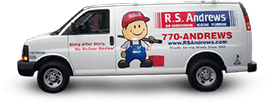A Guide To Energy Recovery Ventilators In Commercial Applications

Are you looking for ways to reduce the load of your HVAC equipment? Trying to find ways to make your heating and cooling process more efficient? Then it might be time to consider an energy recovery ventilator (ERV).
An ERV is designed to recycle and reuse a building’s exhaust air, using it to pre-treat the outside air as it enters. In many cases, a building’s exhaust air is simply dispelled back out into the atmosphere. By using it to precondition incoming fresh outdoor air, you’re adjusting it for both temperature and humidity levels before it enters living space. Because the HVAC equipment doesn’t have to work as hard at conditioning the air, it can dramatically lower a building’s energy costs, as it lowers the workload of the heating and cooling system.
There are several different types of ERVs on the market today, depending on the needs of your building.
A rotary heat exchanger is a plastic or metal wheel that rotates between the exhaust and the incoming airflow. It picks up heat from one air stream and transfers it to the other. Metal wheels are used for transferring heat from area to area. Plastic wheels are used to absorb and release moisture as well. Because these are the lowest cost and are the easiest to maintain, they are the most popular form of ERV installed.
A plate heat exchanger (fixed core) are larger and more expensive than wheel ERVs. Their advantage is they have no moving parts, which means they can be a safer choice in certain circumstances. A fixed core allows air to flow through channels, heating or cooling down the material within the channels and allowing the energy to transfer.
A heat pipe heat exchanger is more limited in use than the wheel or the fixed core. Heat pipes operate with refrigerant inside of them. The tubes are used to transport air between the exhaust and the outside airflow; one heats the refrigerant to cause evaporation, while the other cools the pipe to cause condensation. The process continues as the air moves back and forth.
A runaround coil heat exchanger offers similar features to the heat pipe exchanger. It’s often the preferred method when exhaust and outdoor airflows are separated by distance. A water coil is used in each the exhaust and the incoming ventilation air stream. The two coils are filled with a water/glycol mix to keep it operational. Heat is moved from one tube to the other.
Why should you consider installing an ERV in your commercial location? Energy savings is only one of the factors. The LEED system in use today dictates how much ventilation must be brought into commercial buildings. These requirements weren’t in place when older buildings were built, meaning many of them aren’t up to today’s codes. More outside air is needed, which is where ERVs come into play.
Have questions about the efficiency of your building’s HVAC system? Considering an ERV to improve the air flow in your building? We can answer all of your questions and help you make the best decision for your building.





